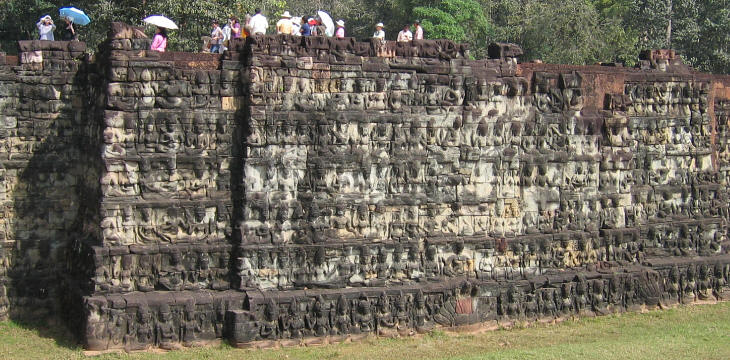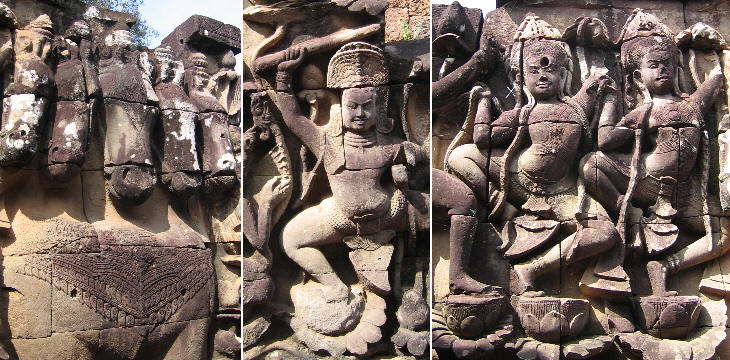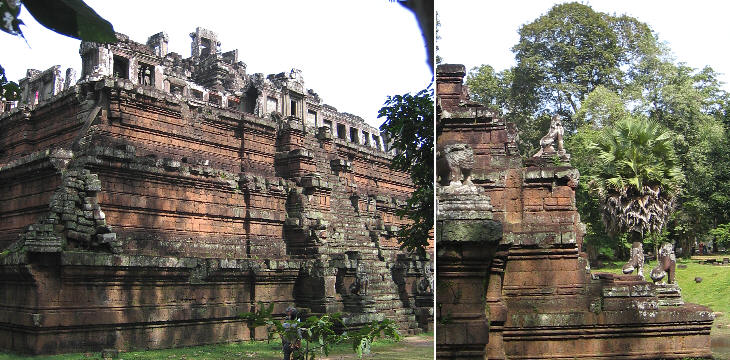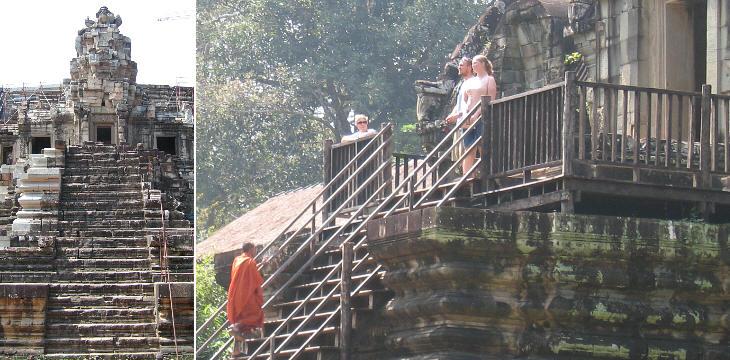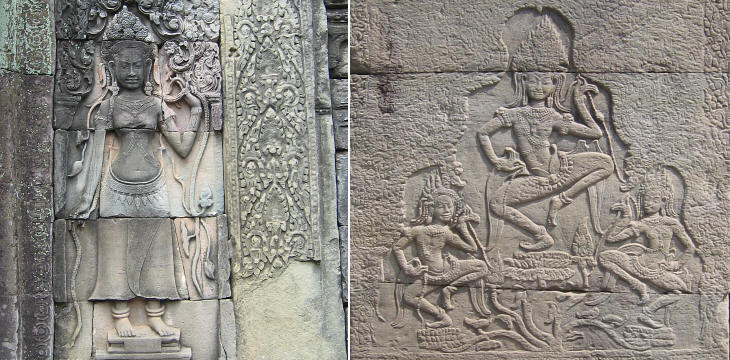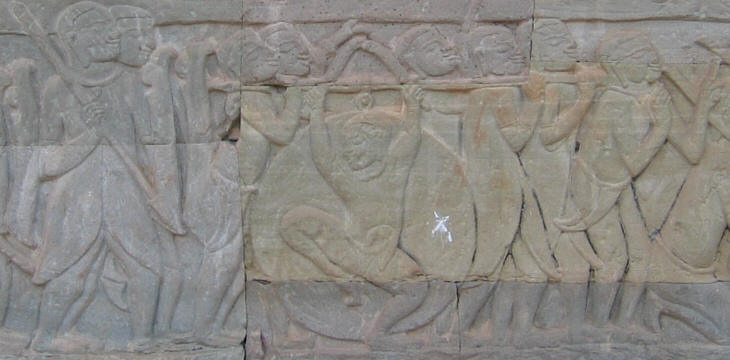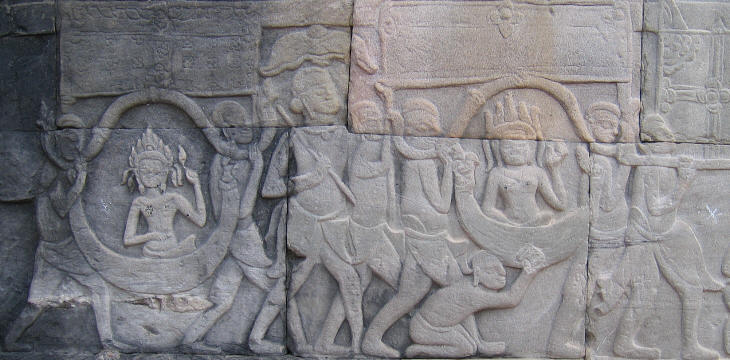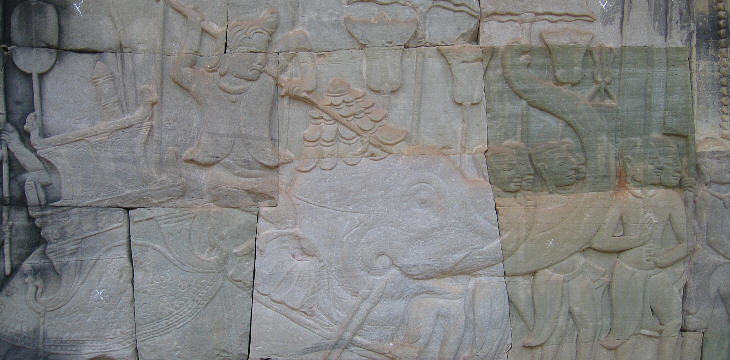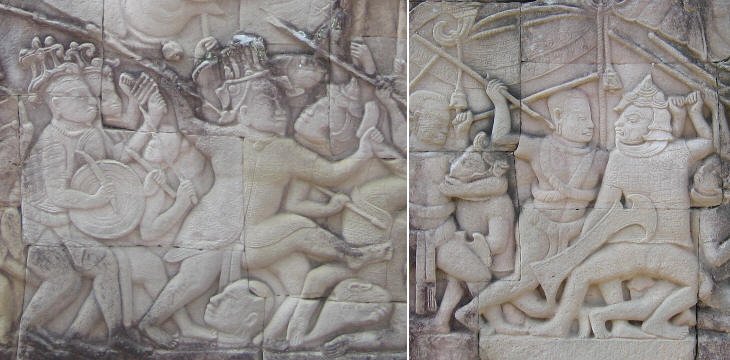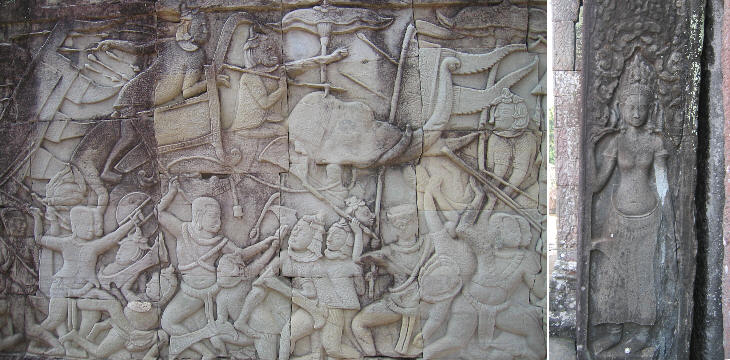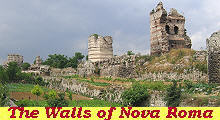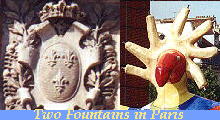  What's New! Detailed Sitemap All images © by Roberto Piperno, owner of the domain. Write to romapip@quipo.it. Text edited by Rosamie Moore. |
 Day one - page two Day one - page two(relief in Banteay Srey) Angkor Thom: Decoration Patterns When comparing Angkor to cities of other ancient civilizations two aspects are immediately evident: the small relevance of funerary monuments and the minimal use of inscriptions to celebrate the achievements of the kings: the first aspect is explained by the belief in reincarnation and the tradition of cremation, which both contributed to diminishing the importance of a burial site. The lack of inscriptions is perhaps due to a very limited knowledge of writing which made them useless in conveying messages to most of the king's subjects.
Reliefs had often just a decorative purpose, with similar subjects being repeated in very large numbers, but there were also narrative reliefs depicting stories from mythology or history; they had the same function that frescoes had in Europe and were used by the kings to speak to the people. Angkor's reliefs are mainly bas-reliefs, sculptures in which the figures never project more than half their true depth from the background.
Columns had rarely a supporting function; they were just a decorative element; this aspect was emphasized by plenty of moulded rings. Lintels were usually decorated with an elaborate curvilinear motif starting from a kala, a symbol of all-devouring time, a monster with a remarkable upper jaw.
The odd number of heads was not peculiar only to snakes (Naga) and elephants (Airvana) (see page one), but also to other animals. Devata were often portrayed as dancers on a lotus flower: in this case they were called apsara. Dvarapala were temple guardians, usually armed with a club: occasionally one can find an apsara acting as a dvarapala. Angkor Thom: Main Buildings Angkor Thom retains monuments of different periods, which were built both before and after the foundation of the city by King Jayavarman VII.
Prah Palilay is a small Buddhist temple having the mountain-like shape of the Hindu tradition, an indication that the move to a different religion did not bring about radical changes in the way temples were designed and decorated. It is one of the most evocative sights of Angkor Thom because it gives an idea of what the first visitors felt when they discovered the ruins of its buildings in the forest. The many mountain temples of Angkor symbolize Mount Meru, the home of the gods in Hindu mythology.
Phimeanakas (built in 978) is a striking example of a mountain temple: it is characterized by three high terraces and by very steep stairs: this steepness (which makes the ascent very dangerous and even more the descent) is attributed to both a religious and a monumental objective: it was an indication of the difficulty of achieving heaven and it gave a vertical thrust to the whole building. Phimeanakas was a sort of Royal Chapel and this explains why it was guarded by lions, a symbol of royalty even among the Khmers.
Baphuon (built in 1060) was the largest temple of Angkor before the construction of Angkor Vat. Its structure however was greatly damaged by the growth of trees and the impact of rain. The roots of the trees opened gaps in the terrace pavements; thus water seeped into the ground which filled the lower structures of the monuments. In 1943 torrential rains caused the collapse of the temple. It was recently rebuilt on a concrete structure; although it was dedicated to Hindu deities, it is now used by Buddhist monks for their prayers. Angkor Thom: the Bayon King Jayavarman VII, the founder of Angkor Thom, left his mark on Bayon, the most interesting temple of the city.
Bayon is a very complex monument: the first travellers thought it was a mountain range, covered by grass and trees. The work of the archaeologists brought to light 54 towers built on the chapels and galleries around the main temple.
Each side of the towers was decorated with the benign face of Avalokitesvara, (the Lord who looks down with compassion) which was both a religious symbol and a portrait of the king.
The temples of Angkor (including the Bayon) often have some small buildings detached from the main structure but inside the temple precinct: they are called libraries, but their function was more similar to that of a sacristy in a church, where vestments and objects used during ceremonies were kept. Narrow porticoes surrounded the main group of temples. King Jayavarman VII had their walls decorated with narrative bas-reliefs mainly describing his victorious campaigns against the Champa.
Although Bayon was a Buddhist temple the king did not renounce the decoration of it with the traditional motifs of the Hindu tradition. He could rely on very skilled artists who excelled also in the so called (in Italian) stiacciato, a very low relief.
The richness and accuracy of the Bayon bas-reliefs can be compared with those of Trajan's Column in Rome. The Khmers are identifiable by being bare headed and by protecting themselves with ropes; the Champa have a conical hat, while Chinese soldiers (fighting with the Khmers) have a more elaborate hat.
 SEE THESE OTHER EXHIBITIONS (for a full list see my detailed list). |
